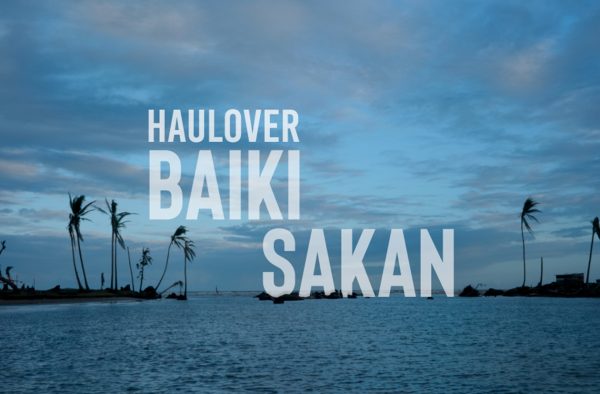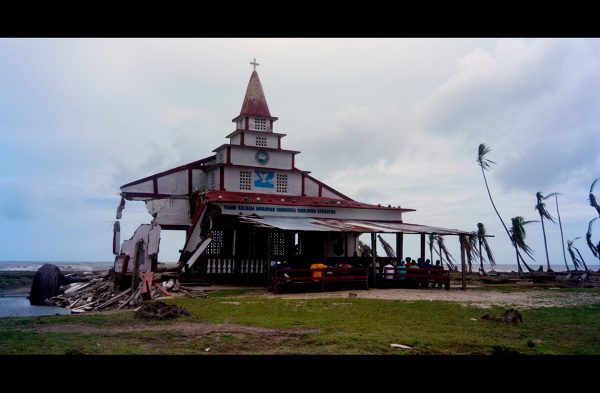What Happened to Haulover, Nicaragua?
Baiki Sakan: The Nicaraguan documentary that portrays the new face of Haulover on the North Caribbean Coast.

Four months after the destruction left by hurricanes Eta and Iota, indigenous communities are still suffering the ravages. This documentary shows and tells us their reality.
By Carlos Morales Zapata (Niu-Confidencial)
HAVANA TIMES – What used to be a Caribbean paradise is now a dessert due to hurricanes Eta and Iota. The documentary, whose translation from the Miskito means “divided,” was produced by the “Hora Cero” organization. It portrays the daily life of Haulover before and after the natural disaster in the coastal community.
According to Atahualpa Quintero, producer of the documentary, the story told is interesting and different from the one initially planned. “We had an idea of what we wanted to tell when we made the first trip for the documentary. But being there and speaking with the people of the community, the story changed a lot.”
Quintero said Baiki Sakan recounts one of the biggest problems that the Haulover community is experiencing. The division that Iota caused by the sea incursion that left the community split in two. “The documentary tells how this has come to intervene the social dynamics of the community and how this has disrupted their way of life.” As well as “how the inhabitants confront the problems in the face of displacement.” The uprooting referred to by Quintero is the solution that the central Government offers to the victims. They want those affected to leave their community. “And they are people who, due to their way of life and culture, are used to living here, to be facing the sea and cannot be removed from where their roots are. It seemed to us that capturing that in the documentary was very important,” the producer remarked.
Production in adverse conditions
“Technically speaking this production was a challenge,” recounts Quintero “because in Haulover there is no electricity, there is no cell phone signal. I think it is a small contribution that we make to bring those experiences.” According to the producer, one of the goals of the documentary was to portray the experiences and realities of the inhabitants of Haulover. So that people know what is happening in the affected Caribbean Coast communities.
He notes that from the beginning, he and his team knew about the challenge that the production represented. “It’s always been part of the commitment we have with “Hora Cero” to make visible the problems and experiences of the Caribbean Coast communities.
Baiki Sakan is part of a series of audiovisuals “fighting against the historical neglect of these communities.”
Haulover after Iota

The documentary narrates how in what there used to be a “paradisiacal space” there is nothing. “Symbolic places like the beach or coconut trees are no longer there. Everything changed,” Quintero emphasized.
“It hit me a lot when they told me about when they arrived the first time after the hurricane. They couldn’t find the community and they thought they were lost. Until later they said no, this is the community, this is what was left,” said the producer.
“It was a total desert”
Yaquelin Budier, a resident of Haulover and the first woman to return to the site after the destruction, tells us how the inhabitants hoped to find their houses and their belongings. “When we arrived, sincerely, we got scared. We cried and everything, because we found that the community was split in two parts and there was nothing. It was a total desert.”
Budier recounts that after the passage of the first hurricane, ETA, “there were still fallen houses, material things; there were still coconut trees. However, Iota took away everything. “It impacted us, the entire population, greatly.”
Likewise, the resident explained that some NGOs and religious organizations helped them with food and drinking water and are still doing so.
Haulover’s main economic activity was fishing, Budier says. But after the hurricanes they lost their materials and have no way of working. And humanitarian aid is not enough to survive. “We have not yet been able to reactivate our economic activities. And without equipment, without materials, we cannot work.”
No governmental response
Atahualpa Quintero said the government’s response does not consider the living habits of the community. He points out that the only response the government offered was to move them to an agricultural area, but the people of Haulover are used to living from fishing.
“These are responses that do not fit the needs of the people. I believe that right now one of the most important things is to try to reactivate fishing production.” For him, humanitarian aid has been key, but the population cannot sustain itself from that. It can only recover if they are given the means to do so, that is, fishing gear “so that they can return to their productive activities in their community.”
How to see the documentary
The documentary was presented on Thursday 11 and Friday 12, March, at the Institute of History of Nicaragua and Central America (IHNCA) of the UCA. Now it can be seen on the website: www.horacero.org .





